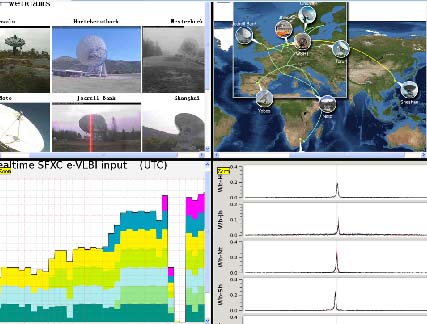Shanghai 25meter radio telescope enjoy the 10Gbps internet express way
The live e-VLBI demonstration attracted the interests of attendees at the special event in London, as well as an international audience watching online. The Shanghai 25-m telescope streamed data at a rate of 512 Mbps, transferred the data to the Beijing knot through China Science and Technology Network (CSTNET), where the domestic network is connected to the international ORIENTplus network. Then the data was streamed over the trans-Siberian lightpath to join the pan-European network, and finally fed into the correlator at the Joint Institute for VLBI in Europe (JIVE) in the Netherlands for processing. Six other EVN radio telescopes [Jodrell Bank (UK), Hartebeesthoek (ZA), Noto (IT), Westerbork (NL), Torun (PL), and Yebes (ES)] sent data to JIVE the same way. All data was transferred almost simultaneously and processed in real-time, demonstrating the powerful capacity of e-VLBI in catching fast variable astronomical phenomenon.
Previous e-VLBI experiments utilizing the Shanghai 25-m telescope relied on a lightpath crossing Canada and the Atlantic Ocean. This observation demonstrated the efficiency of ORIENTplus due to its higher bandwidth and shorter network path.
SHAO gratefully acknowledges the support of the CSTNET, the EVN and JIVE, and the efforts by staff at these institutes and observatories to make this live demonstration a success.

Download attachments: